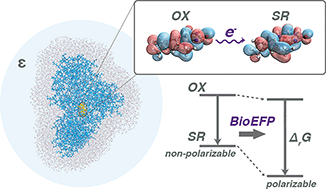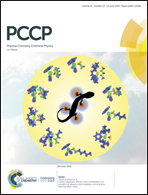Polarizable embedding for simulating redox potentials of biomolecules†
Abstract
Redox reactions play a key role in various biological processes, including photosynthesis and respiration. Quantitative and predictive computational characterization of redox events is therefore highly desirable for enriching our knowledge on mechanistic features of biological redox-active macromolecules. Here, we present a computational protocol exploiting polarizable embedding hybrid quantum-classical approach and resulting in accurate estimates of redox potentials of biological macromolecules. A special attention is paid to fundamental aspects of the theoretical description such as the effects of environment polarization and of the long-range electrostatic interactions on the computed energetic parameters. Environment (protein and the solvent) polarization is shown to be crucial for accurate estimates of the redox potential: hybrid quantum-classical results with and without account for environment polarization differ by 1.4 V. Long-range electrostatic interactions are shown to contribute significantly to the computed redox potential value even at the distances far beyond the protein outer surface. The approach is tested on simulating reduction potential of cryptochrome 1 protein from Arabidopsis thaliana. The theoretical estimate (0.07 V) of the midpoint reduction potential is in good agreement with available experimental data (−0.15 V).

- This article is part of the themed collection: 2019 PCCP HOT Articles


 Please wait while we load your content...
Please wait while we load your content...